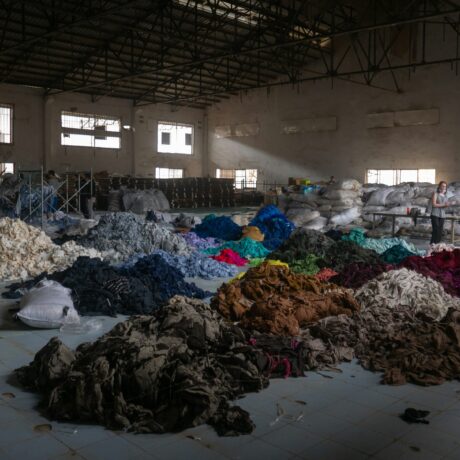Earth Day: The Fashion Industry’s Impact
Every year on the 22nd of April, Earth Day marks the anniversary of the birth of the modern environmental movement in 1970. Widely recognised as the largest secular celebration in the world, and observed by more than a billion people every year, Earth Day is a day of action. This historic event calls for change to human behaviour and to create global, national and local policy changes. Now, the fight for a clean environment continues with increasing urgency, as the devastation of climate change is becoming more apparent every day.
While most of us are now aware of the dangers of fossil fuels, oil spills and intensive farming, still not enough people understand the impact our clothes have on the planet’s fragile ecosystem, in sometimes unfathomable ways. From unprecedented heat waves to deadly flash floods, rising sea levels to biodiversity loss, fashion’s impact on the climate crisis is not just about carbon emissions, but water, chemicals, deforestation, textile waste, microplastics and more.
View this post on Instagram
Profit over planet
According to Fashion on Climate, the fashion industry contributes approximately 2.1 billion tonnes of greenhouse gas emissions in a single year, equivalent to 4% of all global emissions. This staggering figure is comparable to the annual GHG emissions of France, Germany and the United Kingdom combined. Moreover, 70% of fashion’s emissions originate from upstream activities such as raw material production and processing. Devastatingly, 120 million trees disappear into clothing every year, a figure set to double within the next decade.
Forever focused on profit, brands are avoiding the realities of climate breakdown by continuing to pursue extractive business models and faking their way to sustainability through ‘greenwashing’; when a brand pretends to be environmentally friendly or exaggerates their commitment to sustainability, using buzzwords and marketing tactics instead of actually making meaningful changes to their business practices. Despite their green claims, most fashion retailers are built on a scale and business model which is fundamentally unsustainable, otherwise known as fast fashion.
View this post on Instagram
Greenwashing
Predictably, Earth Day has become another excuse for consumer culture to try to sell us things. This day of awareness and action has been drowned in a sea of greenwashing, as brands try to capitalise on our urge to protect our planet. The slew of campaigns promise sustainable business practices and new, ethical collections which seem good on the outside, but are really just manufactured marketing ploys. By using sustainability as a marketing tool, companies can hide the fact that real, positive climate change will not happen through capitalism. Brands are far too comfortable using our human instinct to look after our environment to sell us stuff. The only way to truly stop climate disaster is to challenge our consumerist system.
The current fashion industry is not what the planet or its people need. It needs fibres grown without chemicals, production which puts people over profit, and items made from materials which can biodegrade. We need brands to radically reduce their environmental impact by shifting their focus away from growth. A system which can only be powered by an army of consumers learning to purchase more consciously, who buy less, buy things of quality and buy things which can be passed down through generations.
View this post on Instagram
How to make a difference
Fortunately, we all have the power to change the trajectory of fast fashion. Here are a few important things you can do on Earth Day (and every day):
- Take part in Fashion Revolution Week
- Ask #WhatsInMyClothes? On social media
- Write to your MP about climate change
- Email a brand to ask #WhatsInMyClothes
- Challenge greenwashing by emailing or tagging brands on social media asking them for further information to back up their claims
- Educate yourself about sustainable fashion
- Buy less and shop for quality over quantity
- Choose natural materials – organic cotton, linen, or hemp
- Research brands to identify those that are ethical and practice transparency and sustainability
- Buy secondhand clothing
- Learn how to repair your clothes yourself. The longer clothes are kept, the lower their emissions footprint
- You can make a huge difference on your clothes’ carbon footprint by washing cold and air drying








